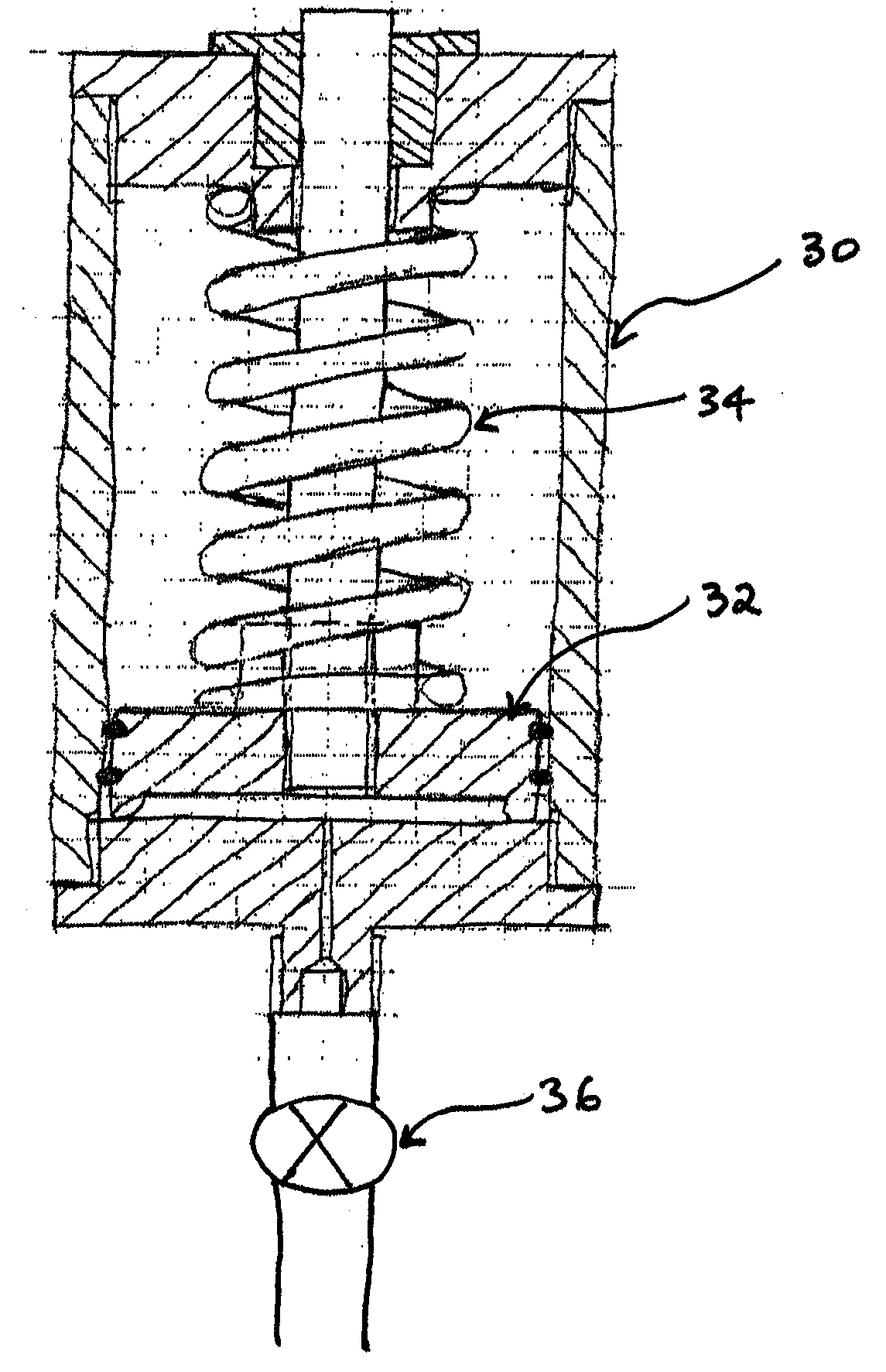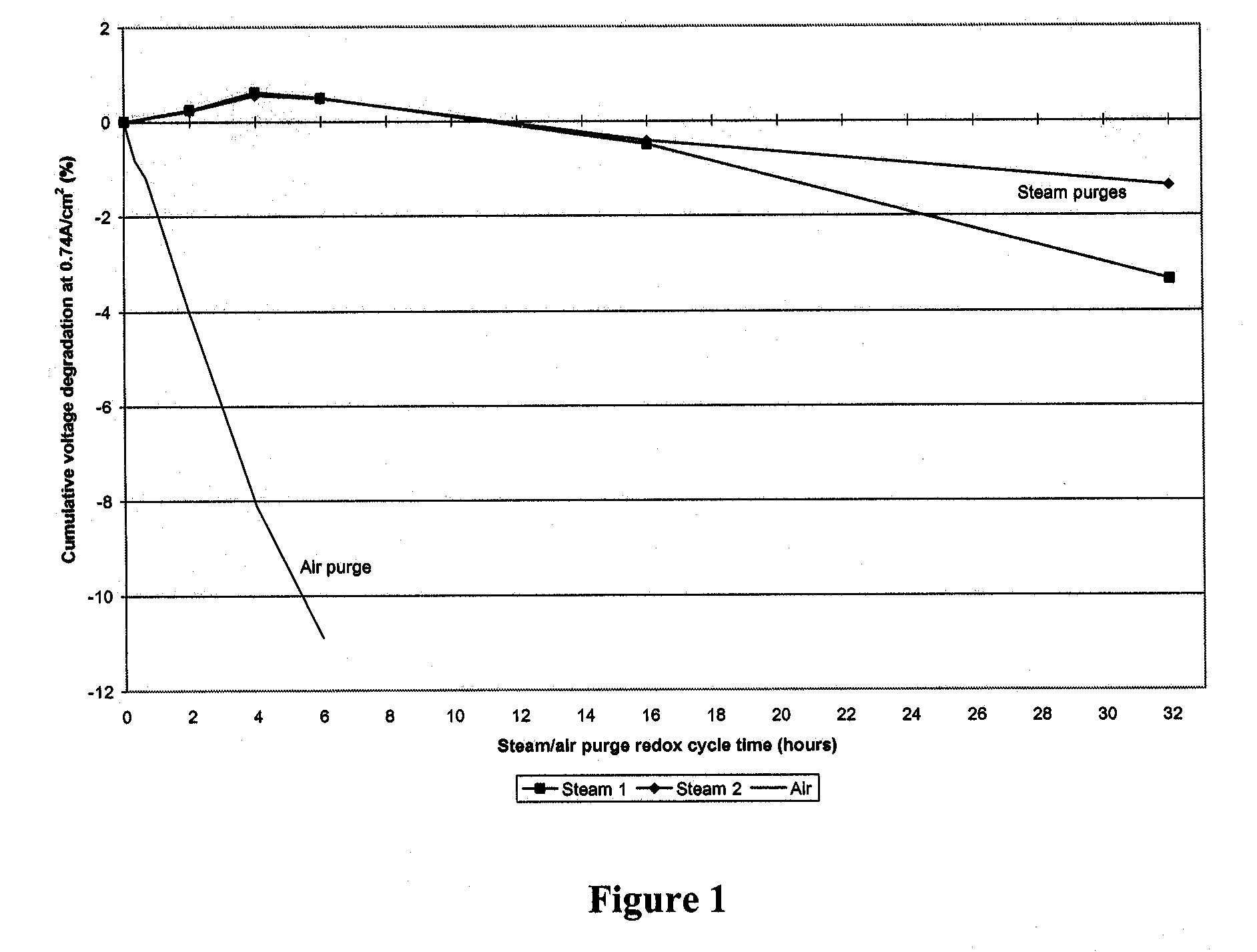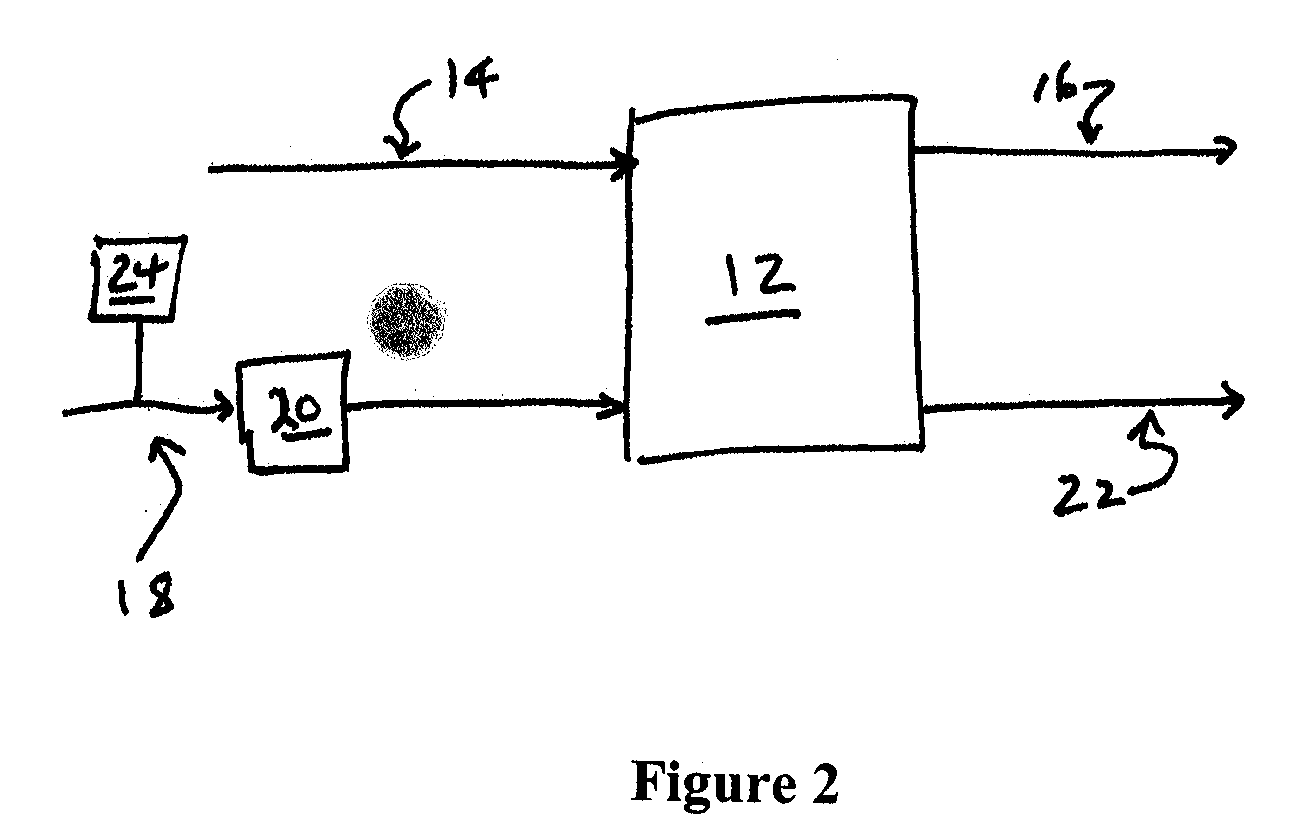Fuel cell shutdown with steam purging
a fuel cell and steam purging technology, applied in the direction of fuel cell heat exchange, fuel cell auxiliaries, fuel cells, etc., can solve the problems of increasing volume and weight, structural and operational problems, and relatively unstable nickel, and achieve the effect of reducing the potential for nickel oxide or nickel carbonyl formation
- Summary
- Abstract
- Description
- Claims
- Application Information
AI Technical Summary
Benefits of technology
Problems solved by technology
Method used
Image
Examples
Embodiment Construction
[0020] The present invention provides for a method and a system for implementing a planned or unplanned shutdown of a system containing a SOFC stack. In particular, the present invention is directed towards a method and system to prevent undesirable reactions at the anode of a SOFC during the event of a controlled shutdown, or an unplanned shutdown arising from conditions such as fuel loss, or other condition which may lead to an oxidizing atmosphere in the anode. Such undesirable reactions may include the formation of nickel carbonyl or nickel oxide at the anode. When describing the present invention, the following terms have the following meanings, unless indicated otherwise. All terms not defined herein have their common art-recognized meanings.
[0021] The term “nickel oxide” includes the product of the reaction in which nickel metal is oxidized to nickel (11) oxide in an oxidizing atmosphere as follows: 2Ni(s)+O2(g)→2NiO(s). Nickel carbonyl means Ni(CO)4, the product of the reac...
PUM
 Login to View More
Login to View More Abstract
Description
Claims
Application Information
 Login to View More
Login to View More - R&D
- Intellectual Property
- Life Sciences
- Materials
- Tech Scout
- Unparalleled Data Quality
- Higher Quality Content
- 60% Fewer Hallucinations
Browse by: Latest US Patents, China's latest patents, Technical Efficacy Thesaurus, Application Domain, Technology Topic, Popular Technical Reports.
© 2025 PatSnap. All rights reserved.Legal|Privacy policy|Modern Slavery Act Transparency Statement|Sitemap|About US| Contact US: help@patsnap.com



